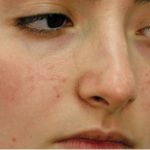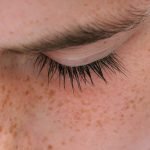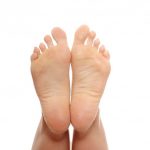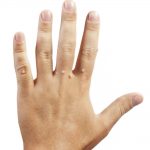 Due to the uncertain nature of the occurrence and development the treatment of keloid scars is a complex task. This type of scarring can be in the form of a star or fan, often they develop on the ears, chest, sometimes occur on the joints and the face. Scars on the face can be removed by the same methods as in the body.
Due to the uncertain nature of the occurrence and development the treatment of keloid scars is a complex task. This type of scarring can be in the form of a star or fan, often they develop on the ears, chest, sometimes occur on the joints and the face. Scars on the face can be removed by the same methods as in the body.
How to get rid of scars can advise only occupational therapist, he will take into account all the features of the disease and help prevent relapse. Unfortunately homemade remedies will not help us to get rid of keloids. We will try to investigate most efficient methods of keloid removal on the market these days. However before deciding upon the procedure you should always consult with the therapist and investigate which options are available there in your neighborhood.
Contents
- The first method: Laser removal
- The second method: Pressure clips
- The third method: Chemical peelings
- The fourth method: Cryosurgery
- The fifth method: Corticosteroids
- Video
The first method: Laser removal
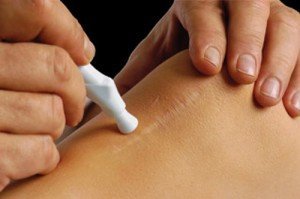 There are few main rules which should be followed when it comes to laser treatment. In order to perform successfully laser removal of keloid scars we need to go through radiation or hormone therapy. The process is happening in such a way: in the thick scar doctor is making injection of hormonal drug that destroys the structure and softens the scar. For the successful result of this stage patient is usually applying some softening creams or gels on the spot while they are at home. As the result after this first stage the keloids stop to grow and go into the stage of the scar. And only now on this stage it can be removed.
There are few main rules which should be followed when it comes to laser treatment. In order to perform successfully laser removal of keloid scars we need to go through radiation or hormone therapy. The process is happening in such a way: in the thick scar doctor is making injection of hormonal drug that destroys the structure and softens the scar. For the successful result of this stage patient is usually applying some softening creams or gels on the spot while they are at home. As the result after this first stage the keloids stop to grow and go into the stage of the scar. And only now on this stage it can be removed.
Important information on the procedure:
- Do not expect miracles as removal of keloid scars will not lead to the creation of the newborn skin.
- The laser will cut off the excess connective tissue and provide the appearance of normal thin scar.
- Do not count on the fact that absolutely nothing will remain. After the huge scar we will anyway have a reminder.
- Unfortunately medicine has not yet resolved anything what would completely permanently help with keloids.
Another important point is active assistance to the doctor. The process of removal of scar is long. It can take from few months to few years. Each stage of the process should be controlled by the specialist.
Contraindications to laser removal:
- People suffering from diabetes and epilepsy.
- Patients with acute infectious diseases.
- Patients with various infections and psoriasis.
- Patients with herpes.
Unfortunately, some patients are contraindicated for laser treatments. But do not be disappointed as for you knowledgeable professionals will be able to choose different effective methods of exfoliation.
Warning: Treatment during all the process cannot be interrupted as it can cause even worse situation than we have had in the beginning.
The second method: Pressure clips
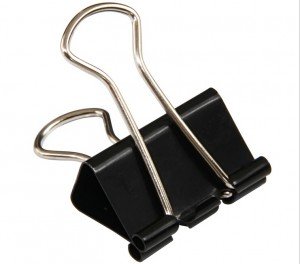 Pressure clips method is specific in a way but quite popular and very efficient. Efficiency of this method depending on the place and stage of the scar can go from 40% up to 100%. Pressure method is mostly used for the treatment keloids on the lips and ears. This method is based on the U-shaped clip which is carried on the rumen.
Pressure clips method is specific in a way but quite popular and very efficient. Efficiency of this method depending on the place and stage of the scar can go from 40% up to 100%. Pressure method is mostly used for the treatment keloids on the lips and ears. This method is based on the U-shaped clip which is carried on the rumen.
Pressure clips effectiveness:
- The clip is placed on the scar according to the doctor’s recommendation.
- The clip is providing pressure on the scar.
- Fibroblasts responsible for the collagen formation (the scar is basically consisting from them) decrease their activity.
- It is likely that the pressure from the clip is also reducing the tension of the skin.
- Thus creation of the scars is prevented by clips.
The most incredible fact about this method is that it has absolutely no side effects. However the disadvantage of this method is that it can be only performed to the certain anatomical areas of the body. Additional minus is that the clip should be worn for quite a long time (12 hours per day for 1-2 years).
The treatment of keloids depends on what stage refers to the scar: young keloids (age from 3 months to 5 years of continued strong growth, looking smooth and shiny and having a color between red and cyanotic); older keloids have been there from 5 to 10 years. Their surface looks rough and wrinkled, sometimes they have sticking of the central part. The color of old keloid scars is lighter than young.
Warning: Only in very extreme and rare cases it can cause expression of the wound by the scar. Too strong or too long pressure can cause such a result.
The third method: Chemical peelings
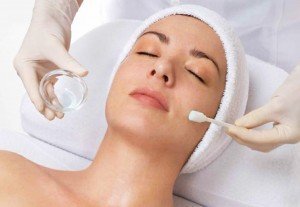 Market of medicines for chemical peels is extremely huge and it is allowing doctor to choose the best option for each patient to address the problems of any complexity and achieve the desired results.
Market of medicines for chemical peels is extremely huge and it is allowing doctor to choose the best option for each patient to address the problems of any complexity and achieve the desired results.
Current condition of the skin, the complexity of the cosmetic problems, the likelihood of achieving the expected results, the method of testing, the risk of complications, the patient’s wishes are those factors which will most likely be taking into consideration when professional will decide upon the type of chemical peeling which should be performed. However there are two main strategies and they are performed according to the size and age of the keloids.
Young keloids removal:
- Small and slightly expressed hypertrophic scars are usually removed into two stages.
- Daily care is performed with silicone dermatological cream that creates an occlusive cover which protects skin from moisture loss. This cream reduces the inflammation and stimulates recovery.
- Usually mesotherapy is recommended together with peelings. This therapy is used with regenerators and amplifiers of local microcirculation.
- Therapy of this type of scars can be continued after the chemical peelings by the extended medications.
Old keloids removal
- Usually chemical peelings in this case are performed in 6-8 month after the excision of the pathological scar or the course of physiotherapy.
- The course of chemical peelings for this kind of case is carried out into two stages: first few sessions with glycolic, salicylic, lactic or citric acid peelings once a week and then a comprehensive retinoic yellow peeling.
Peeling is performed only by individual scheme in accordance with the parameters of the scar and the skin reaction.
Contraindications for chemical peelings:
- Damages of the epidermis.
- Herpes in the acute stage.
- Sensitive skin (intolerance of glycolic acid).
- Skin diseases in the acute stage.
In conclusion, it should be noted that the treatment of keloid and hypertrophic scars across a variety of treatments requires a strictly individual approach taking into account the basic parameters of the rumen: the size and duration of its existence.
Warning: Peeling is inappropriate during the first week after hair removal and other invasive procedures.
The fourth method: Cryosurgery
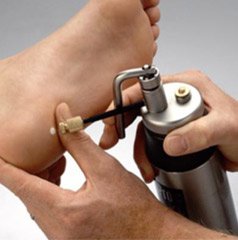 Cryosurgery is used to treat skin problems during about 100 years. The first agent acted by cold was compressed carbon dioxide; liquid nitrogen became available in 1940 and is currently the most widely used. Liquid nitrogen boils at -196 ° C (-320.8 ° F) and it is the most effective for clinical use. Most cells are killed at a temperature from -20 ° C to -30 ° C; only the malignant tissue is often required temperature from -40 ° C to -50 ° C.
Cryosurgery is used to treat skin problems during about 100 years. The first agent acted by cold was compressed carbon dioxide; liquid nitrogen became available in 1940 and is currently the most widely used. Liquid nitrogen boils at -196 ° C (-320.8 ° F) and it is the most effective for clinical use. Most cells are killed at a temperature from -20 ° C to -30 ° C; only the malignant tissue is often required temperature from -40 ° C to -50 ° C.
Time and depth of freezing depends on the size of the formation, type of tissue and depth of the damage. Also should be considered part of the body where the keloid is placed, the water content of the skin and the epidermis thickness.
The advantages of cryosurgery:
- Short time of preparation and short procedures.
- Low risk of infection.
- Minimal care is needed for wound.
- There is no need for the injection of anesthesia.
- No stitches removal at all.
Liquid nitrogen affects microcirculation and causes the death of cell through the formation of intracellular crystals. Usually 1-3 procedures of freezing and thawing for 10-30 seconds is sufficient to achieve the desired effect. Temperature from -25 ° C to -50 ° C can be achieved within 30 seconds if a sufficient amount of the liquid nitrogen is applied to the affected tissue. More attention should be paid to the short duration applications of liquid nitrogen in order to avoid the appearance of reversible hypopigmentation.
Warning: Note that cryosurgery can be painful and cause depigmentation. Side effects that may occur after freezing procedure (cryosurgery) include: the occurrence of minor bleeding, blistering, hypopigmentation, scarring rarely.
The fifth method: Corticosteroids
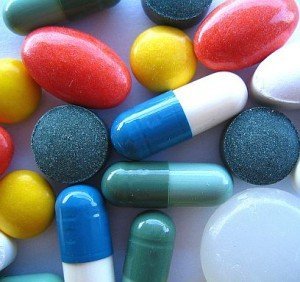 Drug treatment of scars is the first and most widely used method of keloid therapy. For this purpose are mostly used corticosteroid hormones which are introduced into the scar tissue itself. The effectiveness of this method as a mono therapy or in combination with laser removal or cryosurgery is very high, but the side effects restrict multiple assignment of steroid hormone therapy. Side effects are different for each type of hormones.
Drug treatment of scars is the first and most widely used method of keloid therapy. For this purpose are mostly used corticosteroid hormones which are introduced into the scar tissue itself. The effectiveness of this method as a mono therapy or in combination with laser removal or cryosurgery is very high, but the side effects restrict multiple assignment of steroid hormone therapy. Side effects are different for each type of hormones.
Corticosteroids effectiveness:
- Before the procedure usually doctor is performing scar pictures. So you will see the difference before and after and medical laboratories often use these pictures on their websites to show the effectiveness of their work.
- The injections of corticosteroids reduce further growth of scar by reducing the synthesis of collagen, inflammatory mediators and fibroblasts proliferation during the process of wound healing.
- Local injections of corticosteroids are recommended for patients with keloid and hypertrophic scars.
- The procedure is performed on an outpatient basis.
- No need for special tests or analysis before the injection of corticosteroids into the keloid.
- Corticosteroids procedure is performed into the rumen by a syringe. Basically that means that patient is receiving the shot into the keloid.
- Injections can be just a little painful so doctor will previously provide into the scar tissue anesthetics (Lidocaine) with epinephrine. Sometimes liquid nitrogen is used instead as a measure helping to reduce minor pain.
- The treatment ends with the placing of a sterile bandage and further glucocorticoid injections performed 1 time in 4-6 weeks.
Keloids are quite thick so you should not expect final result after one procedure. You will need to get injections several times. The introduction of corticosteroids for the keloid removal is used from the mid-sixties of XX century and is considered the method which is quite often chosen for the treatment of keloid and hypertrophic scars.
Warning: It is highly recommended moderation in alcohol consumption before and after the procedure.
Back
